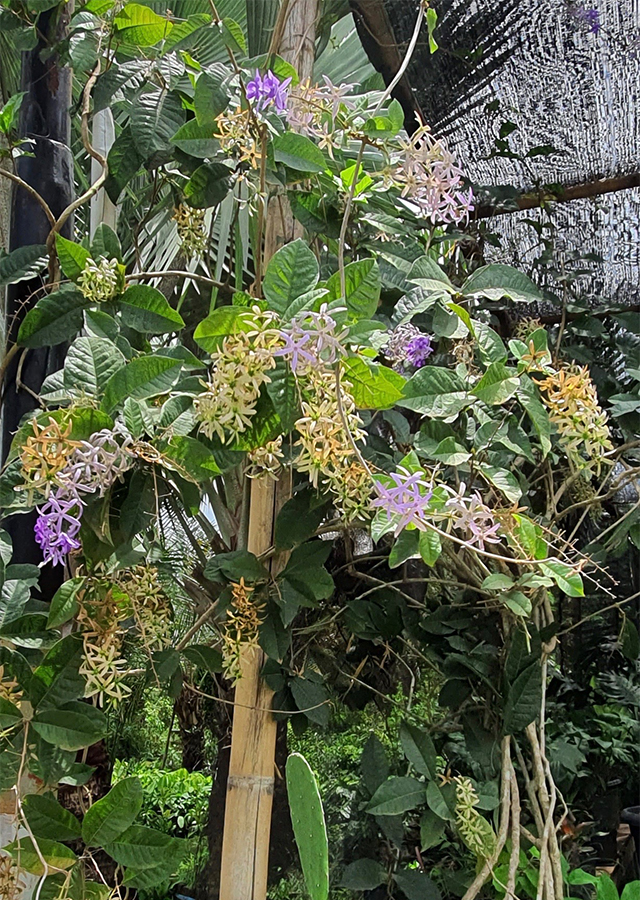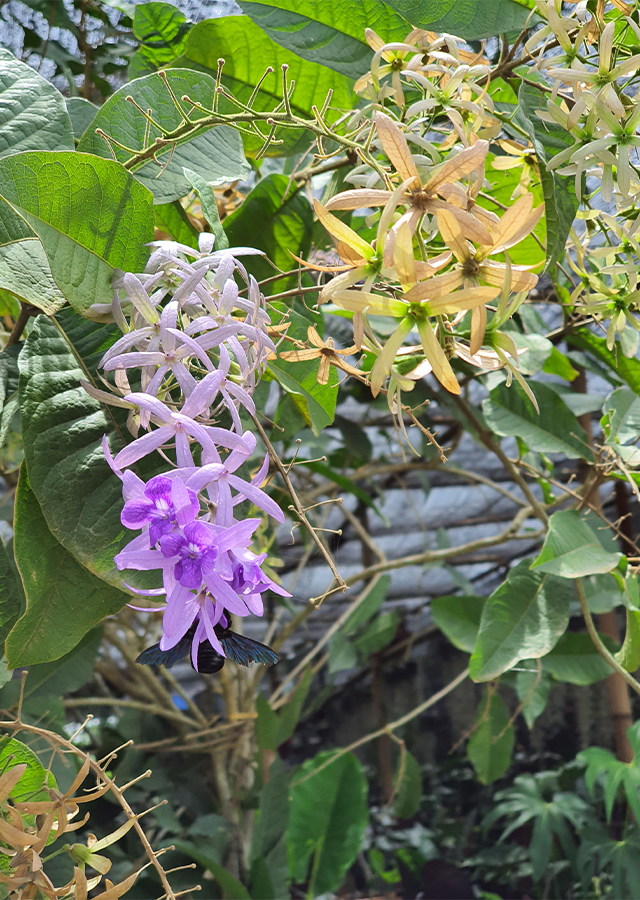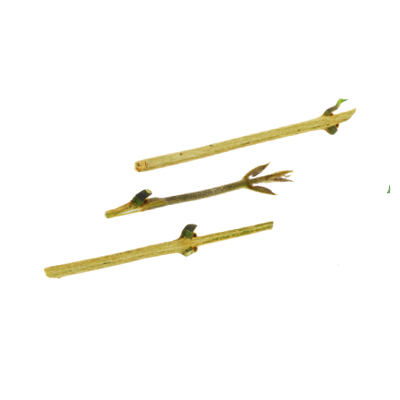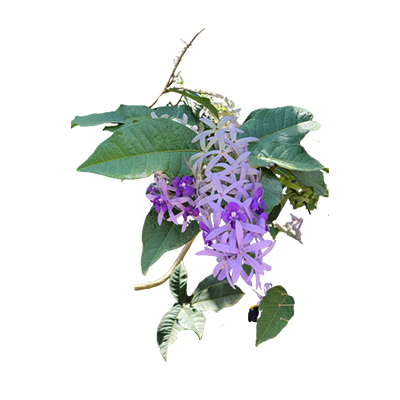Sandpaper Vine
Petrea volubilis L.
Verbenaceae
Location in our garden
Principal



Synonym
Petrea amazonica Moldenke
Petrea arborea Kunth
Petrea arborea f. albiflora Standl.
Habitus
Climbers. Deciduous shrub, growing up to 4 m tall
Part Used
Leaves
Flowers
Roots
Sap
Growing Requirements
Full Sunshine
Need Shade
Habitat
Forest
Roadside
Rocky Areas
Grassland
Overview
Sandpaper vine is native to Florida, Mexico to Tropical America, it was introduced many countries and it is cultivated some gardens an ornamental in the tropics and subtropics due to its attractive blue flowers.
Vernacular Names
Kudirai valuppu (India), Flor de Sâo Miguel (Brazilian), Purpurkranz (German), Yoch opp tzi min (Mexico), Bejuco de ajo (Panama), Fleur de la fête de dieu (French), Lan hua teng (Chinese).
Agroecology
Can be found in seasonal evergreen forest along streams, roadsides, steep limestone walls in dry forest, limestone outcrops, pastures on clay and rocky soil, and on rock. Succeeds in full sun and in light shade. Prefers a fertile, moist but well-drained soil, pH range of 5.6-7.5.
Morphology
- Stems - branches slender, brownish or greyish, densely puberulent with mostly subappressed brownish hairs, prominently lenticellate.
- Leaves - elliptic, opposite,basally obtusely narrowed or acute, rarely rounded or subcordate, apically acute or short-acuminate, rarely obtuse or emarginate, the margins entire, rarely sparsely dentate, mostly glabrous or subglabrous; mature petioles stout, 4-13 mm long, the axils often with dense fasciculations of bractlets, pubescence ferruginous, densely hirsute.
- Flowers - calyx light, the tube cylindric, bright blue, densely pubescent, gradually ampliate apically, the lobes oblong, rounded, 13-18 mm long, 4-6 mm wide; corolla hypocrateriform, bright blue, the tube infundibular; the staminode obsolete; ovary oblong - subobovate, glabrous; fruiting-calyx tough, the tube to 4 mm long, pubescent- densely long.
- Fruit - small, 1 to 2-seeded, embedded in the short calyx tube.
Cultivation
- Generative propagation is by seeds.
- Vegetative propagation is by cuttings and layering.
- Although its cultivation is limited by low temperatures, it can be grown as an annual or as a potted plant in temperate areas.
Chemical Constituents
Sterols, flavonoids, triterpenoids, apigenin, quercetin, 4,6 dimethylscutellarien, hypogallic acid (3,4-dihydroxybenzoic acid), trans-caffeic acid, vanillic acid and acteoside.
Traditional Medicinal Uses
- A methanol extract of the leaves (tincture) has shown hypoglycaemic activity.
- Studies have shown anti-inflammatory, antidiabetic, antioxidant, anticancer and antipyretic properties.
- The flowers are combined with other ingredient (Couroupoume and goatweed) to make an infusion that is used to treat diarrhoea.
- The leaves has shown hypoglycaemic activity, and they are used in the treatment of diabetes.
- The crude sap obtained from the grated or macerated stem is used as a resolutive to soothe wounds and burns.
- In the West Indies, leaves used for abortifacient and diarrhea.
Part Used
Reference Sources
- Abdelwahab, M. F., Abdel-Lateff, A., Fouad, M. A., Desoukey, S. Y., & Kamel, M. S. (2011). Phytochemical and biological study of Petrea volubilis L.(Verbenaceae). Bulletin of Pharmaceutical Sciences. Assiut, 34(1), 9-20.
- Rahman, M., Siddika, A., Bhadra, B., Rahman, S., Agarwala, B., Chowdhury, M. H., & Rahmatullah, M. (2010). Antihyperglycemic activity studies on methanol extract of Petrea volubilis L.(Verbenaceae) leaves and Excoecaria agallocha L.(Euphorbiaceae) stems. Advances in Natural and Applied Sciences, 4(3), 361-364.
- https://www.cabi.org/isc/datasheet/
- http://tropical.theferns.info/viewtropical.php?id=Petrea+volubilis



